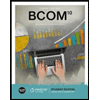
(a)
Case summary: R and N were partners in LLC. They both disagreed with their company’s management and could not resolve the disagreement. Partner N decided to dissolve the company, but partner R wanted to continue with the company and dissociate N. N filed a suit for the dissolution of LLC and she counterclaimed for N’s dissociation. The decision was passed in favor of N. Aggrieved by the decision, R appealed in the appellate court.
To find:The party’s choice on which issue was framed on the appeal of the R’s case.
(b)
Case summary: R and N were partners in LLC. They both disagreed with their company’s management and could not resolve the disagreement. Partner N decided to dissolve the company, but partner R wanted to continue with the company and dissociate N. N filed a suit for the dissolution of LLC and she counterclaimed for N’s dissociation. The decision was passed in favor of N. Aggrieved by the decision, person R appealed in the appellate court.
To find:The rules of interpretation used by the appellate court.
(c)
Case summary: R and N were the partners in LLC. They both disagreed with their company’s management and could not resolve the disagreement. Partner N decided to dissolve the company, but partner R wanted to continue with the company and dissociate the partner N. N filed a suit for the dissolution of LLC and she counterclaimed for N’s dissociation. The decision was passed in favor of N. Aggrieved by the decision, person R appealed in the appellate court.
To find: The languages of statutes construed by the court.
(d)
Case summary:R and N were the partners in LLC. They both disagreed with their company’s management and could not resolve the disagreement. Partner N decided to dissolve the company, but partner R wanted to continue with the company and dissociate N. N filed a suit for the dissolution of LLC and she counterclaimed for N’s dissociation. The decision was passed in favor of N. Aggrieved by the decision, person R appealed in the appellate court.
To find:The language construction by the court that led to the result.
Want to see the full answer?
Check out a sample textbook solution
Chapter 17 Solutions
MindTap Business Law, 1 term (6 months) Printed Access Card for Cross/Miller's The Legal Environment of Business: Text and Cases, 10th (MindTap Course List)
- compute the accounts receivable turnover ratio and the average collection period in daysarrow_forwardwhat is the length of the operating cycle??arrow_forwardWhat is a good response to this post? Nike’s value chain reengineering is a stellar example of how effective BPR can lead to consistent success. By focusing on high-value, knowledge-intensive activities like design and marketing within the U.S. and outsourcing manufacturing through third-party contractors, Nike was able to streamline its operations and put a focus on core competencies. This approach has allowed Nike to achieve high returns while maintaining flexibility and adaptability in its supply chain. However, while Nike exemplifies success, not all reengineering efforts see positive results. An example of an unsuccessful BPR occurred with Hershey’s ERP (Enterprise Resource Planning) system implementation in 1999. Hershey’s sought to improve its processes by rolling out a new integrated software system to manage production, operations, and distribution. While their goal was to increase efficiency and streamline delivery, poor planning ultimately doomed the project. Hershey…arrow_forward
- general accountingarrow_forwardwhat is the company debt to equity ratio at the end of year 2 ?arrow_forwardAt Quick Car Wash, the wash process is advertised to take less than 6 minutes. Consequently, management has set a target average of 330 seconds for the wash process. Suppose the average range for a sample of 7 cars is 10 seconds. Use the accompanying table to establish control limits for sample means and ranges for the car wash process. Click the icon to view the table of factors for calculating three-sigma limits for the x-chart and R-chart. The UCLR equals seconds and the LCLR equals seconds. (Enter your responses rounded to two decimal places.)arrow_forward
- calculate the equity premium ?arrow_forwardIf Jeremy who is the VP for the operations, proceeds with their existing prototype (which is option a), the firm can then expect sales to be 120,000 units at $550 each. And with a probability of 0.52 and a 0.48 probability of 65,000 at $550. we However, he uses his value analysis team (option b), the firm expects sales of 75,000 units at $770, with a probability of 0.78 and a 0.22 probability of 65,000 units at $770. Value engineering, at a cost of $100,000, is only used in option b. Which option for this has the highest expected monetary value (EMV)? The EMV for option a is $? The EMV for option b is $? Which has the highest expected monetary value. A or B?arrow_forwardcompute the predermined overhead rate for the yeararrow_forward
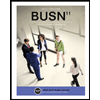 BUSN 11 Introduction to Business Student EditionBusinessISBN:9781337407137Author:KellyPublisher:Cengage Learning
BUSN 11 Introduction to Business Student EditionBusinessISBN:9781337407137Author:KellyPublisher:Cengage Learning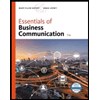 Essentials of Business Communication (MindTap Cou...BusinessISBN:9781337386494Author:Mary Ellen Guffey, Dana LoewyPublisher:Cengage Learning
Essentials of Business Communication (MindTap Cou...BusinessISBN:9781337386494Author:Mary Ellen Guffey, Dana LoewyPublisher:Cengage Learning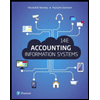 Accounting Information Systems (14th Edition)BusinessISBN:9780134474021Author:Marshall B. Romney, Paul J. SteinbartPublisher:PEARSON
Accounting Information Systems (14th Edition)BusinessISBN:9780134474021Author:Marshall B. Romney, Paul J. SteinbartPublisher:PEARSON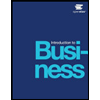
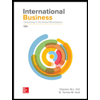 International Business: Competing in the Global M...BusinessISBN:9781259929441Author:Charles W. L. Hill Dr, G. Tomas M. HultPublisher:McGraw-Hill Education
International Business: Competing in the Global M...BusinessISBN:9781259929441Author:Charles W. L. Hill Dr, G. Tomas M. HultPublisher:McGraw-Hill Education